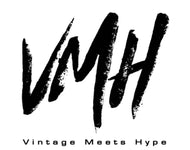
GENDER NEUTRAL & MADE BY PEOPLE OF ALL ETHNICITIES AND BACKGROUNDS


In California in 1980, Shawn Stussy was a surfer who shaped his own boards for friends and the locals of Laguna Beach.
Wanting to promote the sale of his surf boards, he began screen-printing his signature with the same graffiti-style, onto tees and shorts - to then sell out of his car.
With friends and locals purchasing his apparel - the designs became desirable to the public.
In 1984, Shawn began selling Stussy - the surf and skate brand.
This became the first Streetwear brand, originating from the California surf scene, onto the New York skate scene.

In 1988, Shawn brought Stussy to Europe where it was very successful.
In 1991, his revenue hit $17 million. Then the next year, $20 million.

In 1989, James Jebbia opened a store in New York called Union - where he sold mostly British brands.
In 1991, James and Shawn Stussy partnered up to sell Stussy in store - where it did extremely well.
In 1994, Shawn decided to pull away from James, leaving him unsure of what to do next...
That same year, he opened up Supreme - New York
The store was very minimal, but not intentionally - James was very afraid of failure, and did not have a large inventory for that reason.
During the store opening, he completely sold out of inventory - leaving those that did not purchase the very limited apparel very upset.
He then decided that every Thursday would be the day the store was restocked with the new & limited designs - Which continues to this day.

James created a desire for the exclusivity that we still see within today's streetwear market.
A key component of Streetwear is the scarcity aspect - The idea that specific pieces are very hard to acquire, but those who really want them - will truly go to any extent, or price...
Thus, creating the resale market.
/stret.wer/
Casual style that reflects authenticity, individuality & involves comfort.
There is no definitive era that encompasses streetwear, as it is ever-changing - however, it has been largely influenced by music over the years.

Hip-Hop - This new style of music pushed social boundaries and explored the ideas of remixing and sampling. This in itself created a new platform for fashion and cultural expression.
But it was controversial at first...
Most retailers refused to work with Rappers - forcing major record labels to make their own merch. They often embroidered and screen-printed artist's names onto casual fashion and work-wear - such as jerseys, letterman jackets and Carhartt apparel.

Merch from the NY Yankees, Chicago Bulls, LA Raiders, and much more became the rage.
Alongside oversized jerseys, Timberlands, and the latest Nikes

Artists began launching their own Streetwear brands:
Russell Simmons - Phat Farm
Roc-A-Fella Records - Roca Wear
50 Cent - G-Unit
Wu Tang Clan - Wu-Wear

Designer brands such as Fendi, Burberry and Gucci began making appearances in Music videos, thus creating demand.
Nelly made White Air Force 1's the shoe of the era with his hit song

Complex Magazine names Supreme, Stussy and Bape as top streetwear brands

Louis Vuitton x Supreme
Fendi x Fila
Dior x Stussy
CDG x Bape
HYPE BEAST CULTURE
FIRST COINED AS A DEROGATORY TERM TO DEFINE SOMEONE WHO ONLY PURCHASES THE LATEST RELEASES TO IMITATE MAINSTREAM CELEBRITIES
"A LACK OF AUTHENTICITY & INTEREST ONLY IN FOLLOWING EXISTING TRENDS"
JOURNALIST - KEVIN MA OF HONG KONG
REAPPROPRIATED THE WORD WHEN HE USED IT FOR HIS NOW POPULAR FASHION BLOG - HYPEBEAST




